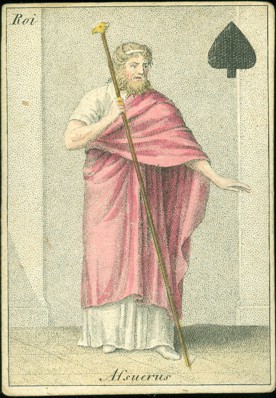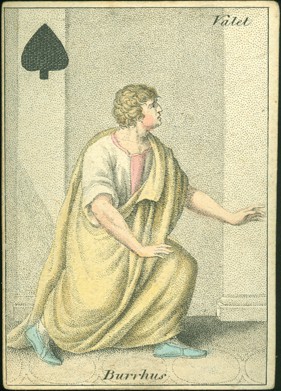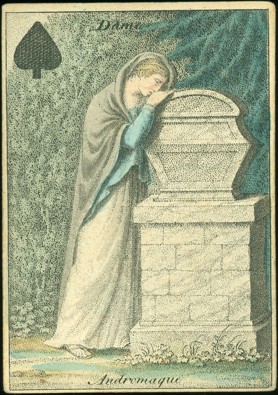|
July 2015
It was a hectic month,
but in the end a very worthwhile one. We didn't really follow all the
offers on the different Ebay's and the Dutch auction site, so only a few
decks were acquired on the internet. However, we had been in contact with
the son of a deceased Dutch collector and he wanted to sell the complete,
large collection of his father, Gerard Gemert. That deal was finalized in
the last week and we're still busy sorting out the 2000 and more decks. We
had to buy the whole collection to get the few gems that we had seen, but
have now found some hidden ones too.
|
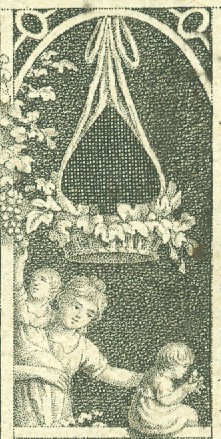
|
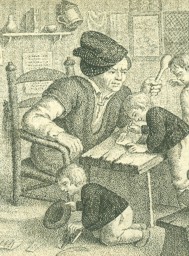 |
So there was
a very interesting shortlist this month and each would have been a sure
winner if we could have spread them out over nine months. The contestants
were (in random order): 1/ a very rare Dutch deck, "Harte Troef",
the Speelkaartenfabriek Nederland (1923, only 711 copies made!). 2/ A rare
Pin-Up deck from 1957 by that same manufacturer. 3/ the
Braun&Schneider Transformation playing cards from 1852. 4/ the
beautiful Art Deco "Whist No 555" by Grimaud from around 1900. 5/ the Jeu de
Drapeaux deck (in the version by H. Kenter). 6/ the French Cartes
Comiques from around 1870. 7/ the rarely
seen Cartes Magiques Musicales by M. Frommann. 8/ the Jean Hachette
transformation playing cards by that same manufacturer. 9/ a rare Belgian
deck by F. Hemeleers van Hoeter (Brussels, c1860), which came with one of
the first "Naine Jaune" jokers (see our Joker
of the Month).
We still have to sort out the greater part of the collection, so there's
always a chance
that something exiting will turn up, but.. nothing could ever surpass
"our first Cotta"! |
It's a
transformation deck that is probably to be found on the wish list of many
collectors. The deck is described in Albert Field's book about
transformation cards (U.S. Games Systems, 1987) and titled "Classical
Antiquity". It's dated as 1806. The deck was published by J.C. Cotta, a
publisher and bookseller from Tübingen, Germany. The designs were done by Countess
Charlotta von Jennison-Walworth. The deck was printed by stipple engravings on
copper.
For those
visitors who are not familiar with transformation playing cards Mr. Field
describes this special kind of playing cards on the cover of his book as
"the creative art that transforms playing card suit signs into
pictures" and that's just what it is. Most of the times that doesn't apply
to the court cards, but there are exceptions. However, looking at the aces here below
you'll see what the idea behind this transformation is. You definitely have to
click them to see the pip cards. They reveal this transformation even better,
sometimes so well done, that it's hard to find the pips when looking at the
design in detail (see the six of clubs).
Until 1805 transformation cards were known from illustrations in books or -in
card form- as a limited number. The first complete deck was published in Germany
by Cotta. It came as the start of a series of 6 packs. They were published each
year as "Karten-Almanachs" (Card Almanacs) and spanned the years 1805
to 1811, with the exception of 1808. This deck is the second one in this series.
The title
"Classical Antiquity" only refers to the court cards. They show
figures from the Greek mythology. Mr. Field had already provided some
information about them in his book, but some figures could do with some additional info, which
was easily found on Wikipedia. So -if you want- you can brush up your knowledge of the
Latin and Greek mythology a bit, but more important........ you can ENJOY these
small works of art, especially those on the pip cards.
|
Ulysses is
the Latin name for Odysseus, king of the Greek island Ithaca and the
Greek leader in the Trojan War. He's also the mythical hero in the
Homer's Odyssey.
Iphigenia is the mythical daughter of Agamemnon and Clytemnestra. She
was sacrificed by Agamemnon as an offer to Artemis, so she would let the
Greek ships sail to Troy.
Mardochie (Mordecai) was the uncle of Esther. He helped save the Hebrews
from Haman (also known as Haman the Agagite or Haman the Evil), a vizier
under king Ahasuerus (Xerxes). |
|
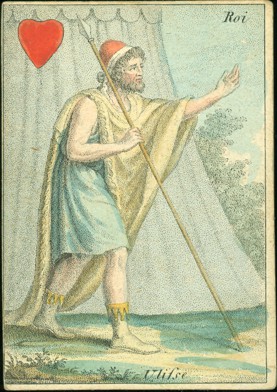
|
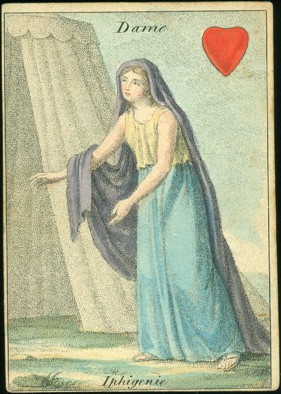
|
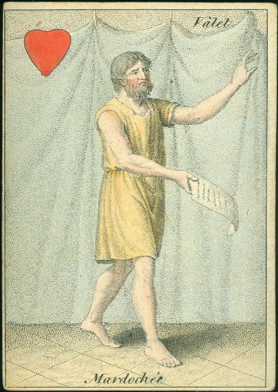
|
|
CLICK EACH OF THE ACES TO
SEE THE PIP CARDS OF THAT SUIT. IT'S WORTH IT. |
|
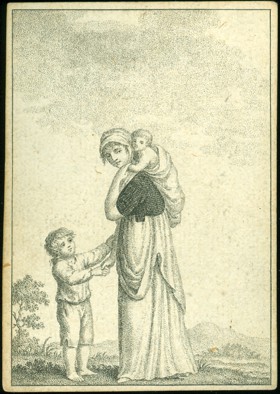
|
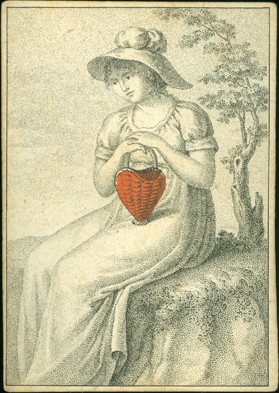
|
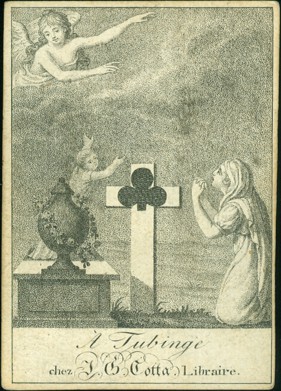 |
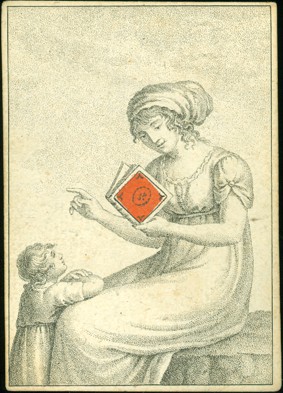
|
|
Pirrhus
(also known as Neoptolemus) is the son of Achilles and the princess
Deidamia. During the Trojan war he killed Priam, Polites and four other
men on the battlefield, and made Andromache his concubine. He became
king of Epirus and was later killed by Orestes.
Esther was the Hebrew heroin who was married to Xerxes, king of Persia.
Arcas was the son of Zeus and Callisto. He was butchered by king Lycaon
and his meat was offered to Zeus. The all knowing Zeus transformed
Lycaon into a wolf and killed all his sons. He revived Arcas and made
him king of Arcadia (named after Arcas). |
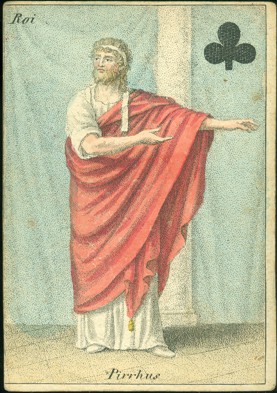 |
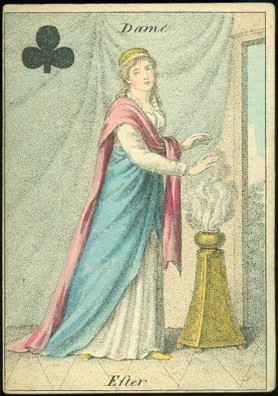
|
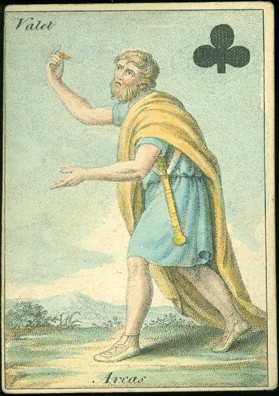
|
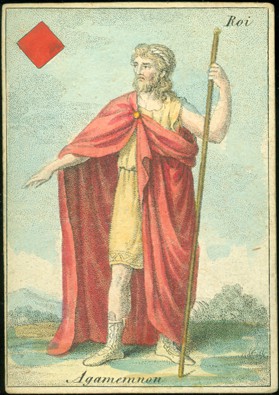 |
Agamemnon
was the mythical leader of the Greeks in the Trojan War. He was killed
upon his return from the war by Aegystus, the lover of his wife
Clytemnestra.
Agrippina was the mother of Nero by her first husband. She persuaded her
third husband Claudius to adopt Nero as his successor. She was later put
to death by that same Nero.
Orestes was the son of Agamemnon and Clytemnestra. He killed his mother
and her lover to avenge his father. |
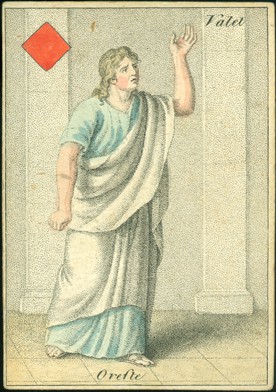
|
|
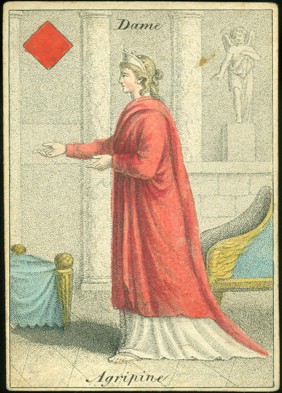
|
|
|
|
|
|
|
|
The cards have
blank backs.
BACK TO PRESENT MONTH


